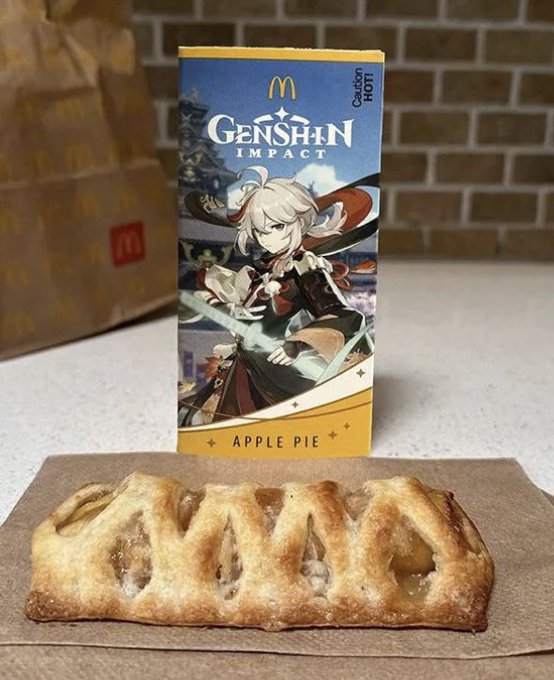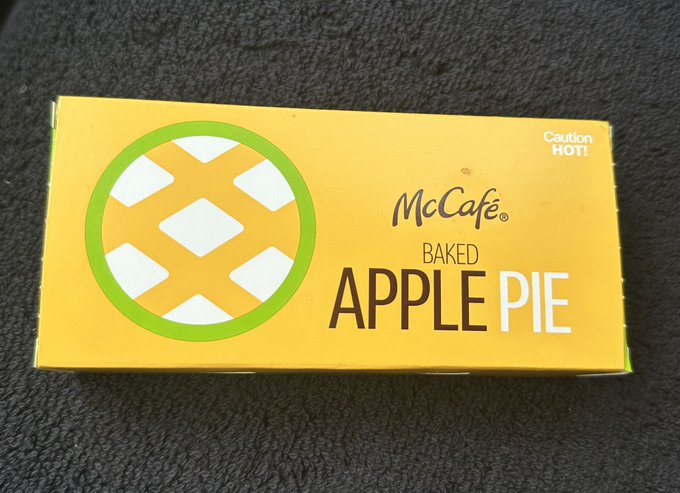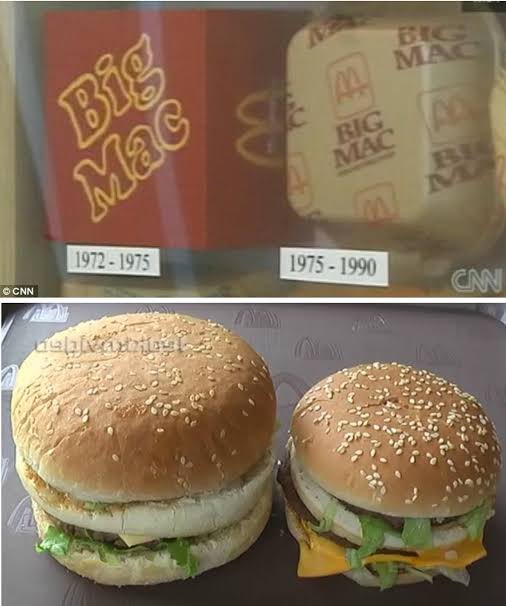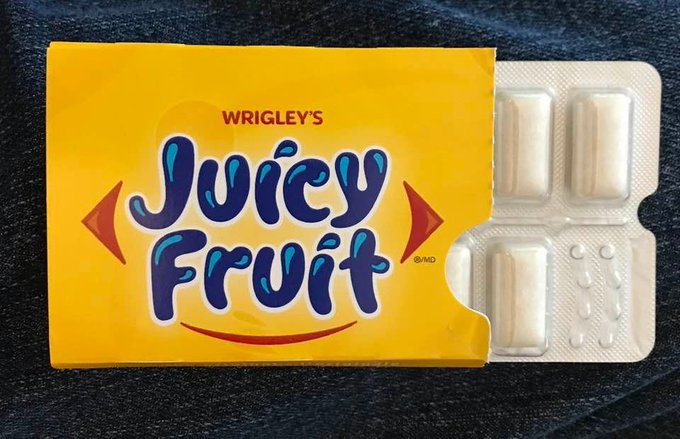Foods They Secretly Changed and Don't Want You To Know About

May 21, 2025
•23 min read
Let's explore some of your favorite foods that have secretly changed, and not in a good way!
Have you ever looked down at a candy bar you’re eating and wondered if they used to be bigger? Or peered at the store shelves and thought that it wasn’t that expensive last year? The good news is you’re not going crazy! Food companies are constantly changing their products, often in the smallest ways, hoping their consumers won’t notice. Let's explore some products they don’t want you to know have secretly changed.
Toblerone Shrinkflation
Back in 2016, Toblerone secretly changed the formation of the bars, so that there was less chocolate in each one. They did this by removing two of the peaks, as well as widening the gaps between them. This reduced the cost of production by approximately 10%. Of course, Toblerone maintained the same sized packaging size and price, so customers only discovered the lack of chocolate when they unwrapped the bar!

Gatorade Decrease
If you need an energy boost, you'll probably buy a Gatorade with its sugary hydrating goodness! Unfortunately, it looks like the company has been powering down by giving us less liquid for the same price. Gatorade have secretly disguised this 14% decrease through their bottle designs. Although they’re still the same height, they’ve made the newer bottles released in 2022 much slimmer than before, and supposedly easier to handle.
This means that the company has gotten away with giving us 28oz instead of the original 32. Manufactured by PepsiCo, the price of Gatorade’s 28oz bottles are $1.72 in Walmart as of the time of writing this article, when for 32oz, they were on sale for $1.66. By distracting customers with the new shape of the bottle, they tricked us into paying a higher price for less! As of September 2023, PepsiCo had dragged in a ginormous $91.5 bn in revenue, up 5.88% from 2022. So, couldn’t we at least keep Gatorade at the same price as before?Subway: Yoga Mat Chemical & Confectionary
You might see the sandwich chain Subway as a healthier option to other, greasier fast foods. Their slogan is "eat fresh", their color scheme uses a healthy-looking green color, and they offer more veggies and lean meat options than a lot of other joints. But despite appearing to offer the healthy choice, it really doesn’t.
Twinkies Now & Then
Nothing tastes as nostalgic as a Twinkie. It was the perfect sweet treat; a cream flavored filling and a sponge as soft as a pillow. At least, they used to be. When they were first invented by James Dewar in 1930, the filling was actually banana flavored. That is, until bananas were too difficult to get hold of, due to rationing in World War II. So, they switched to a basic cream flavoring instead. Thankfully they did, even if this cream is actually just sugar and oil.
After many years of success, the manufacturer, Hostess, went bankrupt when sales dramatically fell during the 90s. By 2004, Hostess were $700 million in debt, and as a result, Twinkies were discontinued in 2012. Thankfully, investment firms Apollo Global Management and Metropoulos & Co decided to buy the company out of its money troubles, and Twinkie hysteria soon rose again.
Pringles Shrinkflation
Have you ever got your hand stuck inside a Pringles can before? It gets harder and harder to pull it out every year. There may be a reason for that, not because you're getting bigger, but because Pringles aren’t immune to shrinkflation. What used to be a standard can size of 5.2oz has noticeably shrunk to an insulting 4.7oz, and they were both sold for the same price tag of $5 in Australia.

Nutella Recipe Change
Whether you like your Nutella on toast, on a cake, or straight off the spoon, the hazelnut cocoa spread has been a kitchen staple for chocolate lovers since it first hit the shelves back in 1964. But for every chocaholic out there came some devastating disappointment in 2017.

New Coke Flop
Coca-Cola is one of the most successful beverage companies in the world, and they’d never do anything to compromise that, would they? Well, in 1985, they put their reputation on the line with a recipe change. When ‘New Coke’ hit the shelves, they were hoping consumers would love the new taste. Instead, they filed over 40,000 angry complaints, forcing them to bring back classic Coke.
Why did they do this? Some people believe that the new version was used to cover up the company’s switch from natural sugar cane to artificial fructose syrup, which is much cheaper. Another red flag was the taste itself; they had made it sweeter than before. In tests, it went down a treat. But in real life, customers realized they missed the taste of regular Coca-Cola. The disappointment, and the sales, were so bad, it only took three months for New Coke to be pulled from the shelves, and classic Coke to take its rightful place once again. Unsurprisingly, sales for this original coke soared, increasing more than twice the rate of rival Pepsi.Kraft Mac N Cheese Recipe Change
Of all the comfort meals, mac ‘n’ cheese is an all-time favorite. And even more comforting is Kraft’s mac ‘n’ cheese. There’s just something about the distinctive cheesiness in their boxed up recipe that can’t be replicated anywhere else, right?
This family favorite has stayed constant through the years, so there’s no reason it would need to change. But it did, and we had no idea about it! In 2016, the company removed artificial preservatives, flavors and dyes, such as yellow 5 and 6. These artificial dyes are what kept that sauce looking Chernobyl-level neon. Instead, they opted to use natural spices like paprika and turmeric. Kraft did this after learning parents were starting to prioritize their children’s nutrition, but swapping artificial dyes for natural ones doesn’t mean the mac is any healthier. Natural flavors come from proteins and plants, but both are still heavily processed in labs. It seems like it didn’t really make much difference anyway, since customers didn’t notice the switcheroo at all. More than 50 million boxes were sold when the change was first made, showing no deviation from regular sales patterns. So, the change had no effect.Nescafé Recipe Change
When waking up in the morning, we all need coffee. Coffee just helps us cope. Which is exactly why customers were so frustrated when Nescafe changed one of the coffee products back in 2015. The company released an "improved" version of their sachet range called Café Menu, with packet lattes and cappuccinos that were supposedly creamier and frothier with a fuller taste.
Does anyone really know what that means? Well, it was Nescafe’s defense when customers started blowing up their social media, claiming that the coffee tasted disgusting, with some even vowing to boycott the brand and comparing it to ‘dishwater.’ These fans were so upset, in fact, Nescafe started deleting comments and blocking users from posting at them, which is a cardinal internet sin!Oreo Shrinkflation
Oreo is America’s favorite cookie! The company has been around since 1912, and we’ve been twisting, licking and dunking this sweet sandwich cookie ever since. But in 1997, a significant change was made to the recipe without consumers knowing, they removed the pig lard. People might gag at the idea of a cookie containing animal fat in this day and age, but it gave the Oreos of the day their flavor.
Oreo’s owners Nabisco were hoping to get into the lucrative kosher food market, and with pigs not being a kosher animal, Oreo’s had to remove the lard and spend more than $150,000, some $300,000 today, over 3 and a half years to thoroughly cleanse its baking ovens of the ingredient. They replaced the lard with trans fats, which eventually made the cookies both kosher and vegan, so just about everyone could enjoy them! But there have since been cases of low quality and shrinkflation afoot. In 2016, there were many reports of the crème filling and chocolate cookie not tasting the same. While Oreos are still made in the US, Nabisco started moving some production facilities to Mexico. Incredibly, customers claim to be able to taste the difference between American and Mexican produced cookies. But the changes don’t stop there; many fans have noticed a lack of crème in their Oreos, contrary to the packaging. These fillings are nowhere near the edges, nor are they very thick! The ratio should be 71% cookie to 29% crème, with 0.17oz of the filling in each one, but that doesn’t feel right. Compare them to a photo from 1986, and you’ll clearly spot the difference. The net weight has been reduced too. It went from 16 glorious ounces of Oreos to a measly 13.29oz today.McDonald's Changes
McDonald’s famous golden arches have seen many, many visits since the fast-food chain’s conception back in 1955. And, unsurprisingly, its menu has adapted and changed over the years. But some of them haven’t gone down as well as others.
I went to @McDonalds for the “Genshin Impact Meal” and Genshin Apple Pie as in the pic. But, I didn’t get the #Genshin box, WTH??? #GenshinImpactMeal #mcdonalds #disappointed
From 1980 to 2020 the @McDonalds Big Mac gone from $0.50 to $8 and lost ~40% of its size. 2% transitory inflation, right?
Fanta Flavor Changes
There’s nothing like a can of cold orange Fanta on a hot day. If you’re a fan of the citrus taste, you wouldn’t want anything about it to change! Fanta started all the way back in Germany, 1940. Created by Coca-Cola Deutschland, Fanta was made from sugar beet, whey and apple pomace leftovers, a perfect way to prevent waste at the height of ongoing war. As you can see in the image below, this left the "klassik" drink with a pale-yellow appearance.
Lucky Charms Shrinkflation
Sweet treats for breakfast are definitely a guilty pleasure: donuts, Poptarts, but Lucky Charms may be the sweetest and guiltiest of them all, that’s why we love them! The colorful marshmallow bits have always been the best part, too, but they’ve gone through their fair share of changes.
Originally, the cereal was put to market in 1964 and included pink hearts, yellow moons, orange stars and green clovers. After 1975, however, producer General Mills changed up the charms and has continued to do so. Whether you’ve noticed or not is the key, I’m willing to bet many people were as oblivious to it as I was! Blue diamonds were added in ‘75, purple horseshoes in ’83, red balloons in ’89, rainbows in ’92, and so on. General Mills phased different marshmallows in and out of their cereal like a baseball team switches out their batters.

Dominos Change
If there’s one thing you can rely on, it’s pizza. Dominos is a go-to when you need a great tasting pie any day of the week. You might think it’s tasted exactly the same over the years, but you'll be shocked to learn that it doesn’t actually taste how it used to!

Taco Bell Change
If you’re going to eat a Taco Bell, you have to get their nachos. And with every nacho, you need their cheese sauce to dip them in. But if you thought it looked different to how you remember it, you’re not going crazy.
Taco Bell removed one key ingredient from their cheese sauce in 2015, to make it look different than before. Like Kraft, they also switched out artificial dyes like yellow 6 and replaced them with natural flavorings. This is why the melted cheese doesn’t have that signature shade of bright orange anymore!Breyers’ Recipe Change
Breyer’s ice cream founded all the way back in 1866 in Pennsylvania, have been sneakily changing their recipe since 2006 to include more ingredients, so much so that it can no longer be legally classed as ice cream.
Ice cream has at least 10% dairy fat, but Breyer’s went for lower fat options, and now it contains up to 40 ingredients. These include corn syrup, carrageenan, a red seaweed used to thicken food, and diglycerides, an emulsifier. Breyers claims this enhances the flavor, but many wished for the old recipe back.Campbells Soup Changes
When people are ill, it’s straight to chicken soup to help us feel better. And if you’re going to have chicken soup, it’s got to be Campbell’s. Their chicken noodle is just perfect when you’re fighting off a cold. But the company decided to take our health concerns even further by removing ingredients from their soup!
Airwaves Shrinkflation
Gum is great. When you accidentally leave your house without brushing your teeth, it’s your on-demand toothpaste. When you have a date, it keeps your breath minty fresh. But sadly, shrinkflation has affected this too. Increasingly, companies have started to tack on an ‘easy to grip’ tab on their packets, robbing you of one or two gum pieces.
Wrigley’s joins the evil trend of shrinkflation! They’ve replaced one of the pieces of gum in their packs with a “easy-pull” tab. Sheesh!
Dessert Shrinkflation
If you thought Breyer’s frozen dairy dessert was bad, the next facts will shock you to your core. Food companies have come up with some very clever ways of cheating you out of your ice cream, from shrinking them down to deliberately giving you less! This Tillamook tub will make you angry, with their 1.75-quart carton cut down to 1.5. That’s a 17% decrease in ice cream for the exact same price!
But there’s more. Someone’s ice cream has a whole empty shell around it instead of being filled to the top. And Klondike bars, they used to be so big and chunky, but now they look as flat as an old tire. These chocolate covered ice cream bars were once advertised as being too big for a stick, but now it looks like they might need one or they’ll fall apart!
Doritos Shrinkflation
As a snack, or sometimes as a whole meal, Doritos chips and dip is the answer. But you must have noticed the difference in size in the last few years! A bag that used to weigh 9.75oz is now 9.25oz, with an average of five less chips in every pack, according to Frito-Lay.

Reese’s Shrinkflation
Peanut butter and chocolate; the greatest combination of flavors on earth. And who does it better than Reese’s? Founded in 1928, they’ve quickly become one of the best-selling candy brands in the US, and receive over $2bn in sales each year.
But the company has slowly been reducing the sizes of their products, and now we’re finally starting to notice. The standard peanut butter cup was originally 0.9oz, but in 1991, they were reduced to 0.8oz. It didn’t last too long before the cup sizes were reduced again in 2001 to 0.75oz. As a result, the classic 2-pack in 1980 was 1.6oz, but in 2022, they were 1.5oz instead, marking a 7% decrease.
































